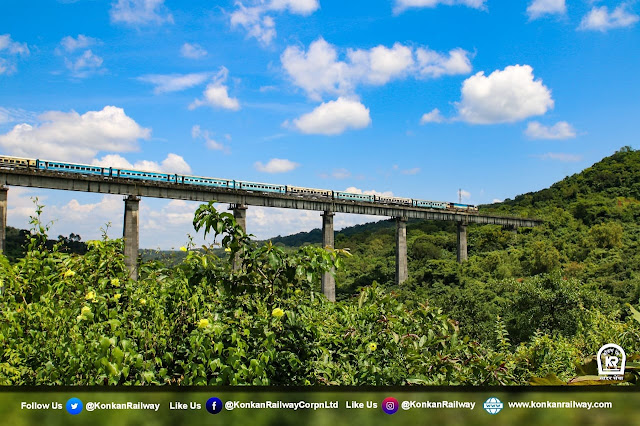Panvelnadi Bridge
Location: Ratnagiri, Maharashtra, India
- The Panvelnadi Bridge stands out as a landmark in engineering and construction on the Konkan Railway line. It is located in the yawning valley of Ratnagiri, an area famous for its lush landscapes and Alphonso mangoes.
- At the time of its construction, the Panvelnadi Bridge was the tallest bridge in Asia, underscoring its monumental scale and the engineering prowess involved in its creation.
Height:
- The bridge, at its highest point, is only 4 meters shorter than the Qutub Minar, which is one of the tallest historical structures in India. This comparison highlights the impressive height of the Panvelnadi Bridge.
Construction Technology:
- Slip Form Technology: The tall pillars of the Panvelnadi Bridge were hardened using a technique known as 'slip form.' Although this technology was available in India, the Panvelnadi Bridge marked its first application in the country for such a large-scale project.
- Incremental Launching Technique: This technique was used to install the giant viaducts. Whole decks were constructed and then hoisted sideways until they reached the other side. This method was necessary due to the dizzying height of the pillars, making it impossible to support and bolt the viaducts using conventional methods.
Engineering and Supervision:
- Indian consultants led the engineering work, ensuring the project was executed with local expertise and knowledge.
- The project was carried out under the capable supervision of a German agency, ensuring international standards of quality and precision in construction.
Awards:
- The Panvelnadi Bridge received the prestigious American Concrete Institute’s Award for exceptional construction in concrete in 1995, recognizing the bridge's outstanding engineering and construction quality.
- It also garnered an award from the Indian Institute of Bridge Engineers, further affirming its status as a landmark in Indian engineering.
Impact and Legacy:
- The construction of the Panvelnadi Bridge was a critical component of the Konkan Railway project, enabling the line to traverse challenging terrain and link the Konkan region more effectively with the rest of India.
- The successful use of advanced technologies such as slip form and incremental launching not only facilitated the construction of the Panvelnadi Bridge but also paved the way for these techniques to be used in future projects across the country, including the Delhi Metro.
The Panvelnadi Bridge stands as a testament to the innovative spirit and technical expertise that characterized the Konkan Railway project, making it a significant achievement in the history of Indian infrastructure development.
Image courtesy: Internet




Comments
Post a Comment